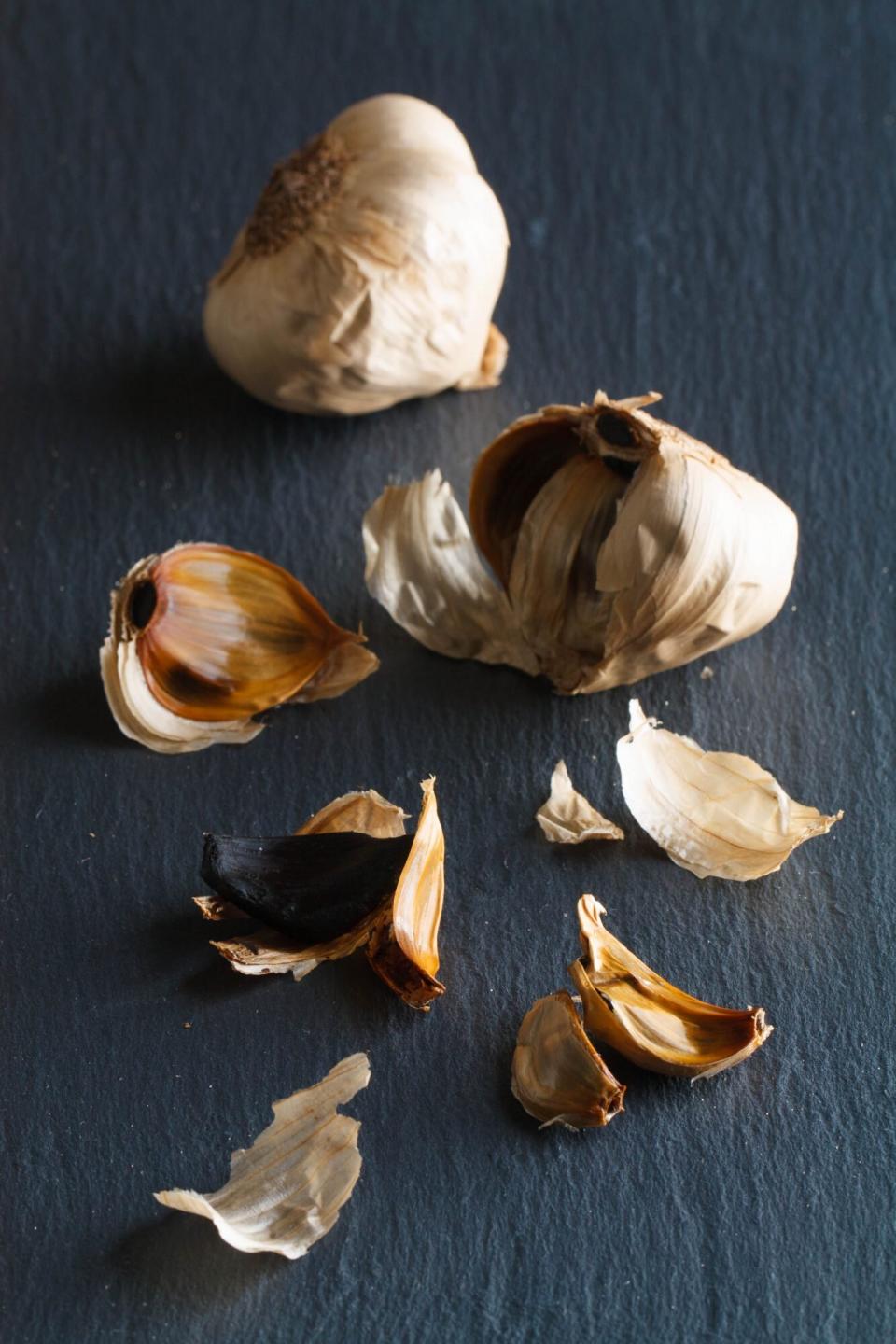All About Black Garlic, Including What It Is and Why You Should Start Cooking with It
Tar-black within its papery skins, wizened, and rather deflated-looking, black garlic is the intriguing ingredient whose obscure origins and worrisome appearance have not prevented it from becoming a must-have ingredient in home kitchens. Where did it come from? How did it get here? And is true that you can make black garlic at home?

Getty/Lucy Vaserfirer
Let's begin with the garlic we all know—the white to purple-skinned bulb made up of firm, pale, powerfully-flavored cloves. Fresh garlic is pungent the minute it is bruised or cut. It is hot on the tongue when raw, but it mellows when cooked slowly, and it lingers on the breath long after it's been consumed. By contrast, black garlic is as dark as molasses, as soft (and spreadable) as room-temperature butter, and as earthy and meaty in essence as caramelized mushrooms. Black garlic tastes distinctly sweet against an acid backdrop. Also, that lingering fresh-garlic whiff of sulphur that offends some noses? It has been banished: The chemical make-up of black garlic has been transformed by an aging process that changes its aroma from pong to perfume.
To make black garlic whole heads of fresh garlic are kept in a controlled environment at a consistent and low heat (between approximately 140 to 170 degrees Fahrenheit) with relatively high humidity. They are left undisturbed for between a couple of weeks and several months. Under these conditions the pungent compound allicin is broken down in a mind-bendingly complex process called the Maillard Reaction (it also makes seared steak smell good). Natural sugars take over the flavor profile of the darkening garlic. Various factors affect the quality of the final product, including the type of garlic used, the exact temperature at which it is held, and the amount of time the garlic is allowed to age. (Black garlic-making consensus is that too-high a temperature will age garlic faster but can result in a bitter and sour bulb. Slow is the way to go, just like the best winter stews.) And yes, you can make your own black garlic at home in a slow cooker or rice warmer. The process will be, well, fragrant.
Related: How to Use Vinegar in Cooking
The origins of black garlic are as murky as its cloves are sombre. Is it a rediscovered heritage food that evolved in clay pots left undisturbed somewhere in East Asia? Can its modern iteration be traced to Mark Botwright, a British garlic farmer who says he chanced upon a 4,000 year old Korean recipe on the Internet and who made the first black garlic in England in a biscuit tin in his Aga (and whose subsequent samples entranced his chef friends)? Is black garlic a superfood popularized by Korean-American inventor Scott Kim, who patented a device to make it? (Since 2008 his California-based company Black Garlic Inc. has been producing and marketing the black bulbs). Or was it developed in Mei prefecture in Japan in 1999, in a quest to make this functional food (meaning food-as-medicine) more palatable and accessible to more people?
Ultimately, we don't really know where it originated. What we do know is that black garlic is now the focus of much digital attention. And whether it is as healthy and beneficial as pundits claim (based on animal studies, to date), it is indeed very delicious: Black garlic may be to uncured garlic what truffles are to button mushrooms. It has that hard-to-define gustatory star power. You know it when you taste it.
So, how best to eat black garlic? Honor it with simplicity. Spread whole cloves of black garlic on toasted sourdough bread. You may want to melt a little ripe, soft cheese over that, under the broiler. Warm peeled black garlic cloves in good butter and drizzle the sauce over a gentle green vegetable, like steamed asparagus. Got latkes? Top them with a clove of peeled black garlic. And yes, black garlic does love pasta, tossed through just before serving, with a lick of warm cream. And adorn your pizza with some naked black cloves (protect them with some sauce, or leaves, or cheese, because blistering dry heat can kill their special flavor). Or slip black garlic under the protective skin of a roasting chicken, with a dab of butter.

